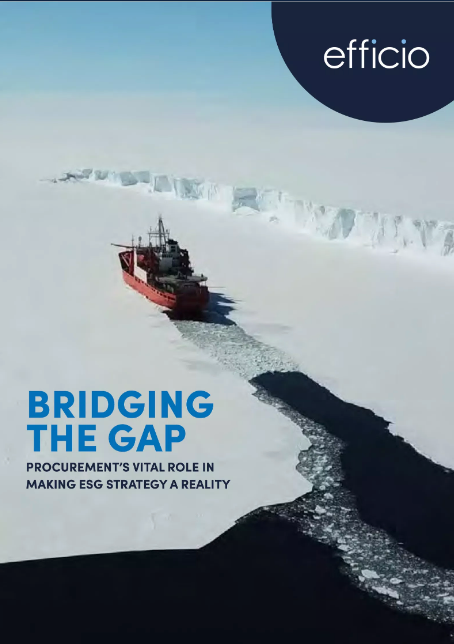Part 4:
Building the means
Reviewing our research findings conjures up an image of entering an endurance race with only a vaguely defined endpoint and no route or aid stations. In this situation, many will recognize the relative futility of movement and come to a standstill, some will run at speed in random directions, and others may systematically scout the area. In time, progress will be made, but it will be slow and costly.
Lord Deben, Chair of the Climate Change Committee has stated that the UK government had set strong targets on cutting emissions but policy to achieve them was lacking. “The government has willed the ends, but not the means. 7”
Without these means being clearly defined, we need to learn from those who have made a plan and taken the first steps. We then need to work together to share the burden.
Jessica Bederoff Stenvad is leading the charge across Nordic Capitals’ investment portfolio.
Expert View

Jessica Bederoff Stenvad
Sustainability Manager
Nordic Capital
"THE KEY FOCUS OF PROCUREMENT TEAMS IS TO DRIVE TOTAL COST OPTIMIZATIONS WHILE STILL LIVING UP TO THE ORGANIZATION’S CORE VALUES AND CREATING RESILIENCE IN THE SUPPLY CHAIN."
Jessica Bederoff Stenvad is an expert in integrating sustainability into business strategy. Discussing her work at Nordic Capital, she shares some insights into how a private equity firm can take an active role in driving the ESG agenda among its portfolio companies.
Read the full interview10 steps to sustainable procurement
Efficio collaborates with many different organisations each year, each with their own challenges and goals but all defined by the desire to do procurement better. These partnerships are a great incubator for ideas and offer the ability to trial approaches, learn, refine, and share. Accordingly, we have made sustainability a core part of our methodology to provide our clients a head-start.
We recognise the challenges faced by the responders and share their optimism but remain focussed on providing solutions to help clients operationalise sustainability within their supply chains.
The following 10 steps to sustainable procurement summarise our recommended approach, based on ESG work we’ve done both internally and with our clients.
Steps 1-4: Baseline and Build a Value Case
STEP 1: UNDERSTAND YOUR ORGANISATION'S ESG OBJECTIVES
You can’t improve everything, at least not all at once. This is especially true for a set of ideals as broad as those encapsulated by ESG. Make sure, therefore, that you know what is truly important to your organisation and where you can make a difference. Sustainability targets range in commitment levels – from internal aspirations to being externally reported and audited – and so they require different levels of focus and rigour and will help define Procurement’s agenda and where to spend its time. Assess if your business has accurate baselines and target, as well as agreed tracking measures. If not, push for definitions, data sources, and ways to translate a % improvement into a monetary equivalent.
STEP 2: ENGAGE YOUR SUSTAINABILITY LEADS
If your organisation has a sustainability function, then it should be setting the business-level strategy from which the procurement team derives its own strategy. It should act as the Subject Matter Experts (SMEs) to guide the rest of the organisation around policy, sustainability approaches, and requirements. Understand their key themes or ‘capitals’, and then agree those which Procurement is well-placed to drive forwards.
STEP 3: BASELINE YOUR SUSTAINABLE PROCUREMENT APPROACH AND CAPABILITY
As the agents of change, your team needs to be equipped with the right targets, skills, and tools, so make an honest assessment of your current capability. Ask the questions:
- Does the team understand the sustainability agenda and how it can play a part?
- Do you have a clear policy and playbook to guide and support the team?
- Do you have agreed tender questions, scoring approaches, and contract terms to hand?
- Is sustainability built into the fabric of the procurement process, especially in category strategies?
STEP 4: TRIAGE YOUR SPEND CATEGORIES AGAINST SUSTAINABILITY THEMES
A key step is to triage spend against agreed sustainability themes to understand which spend areas can drive which themes. Weight these areas by spend, sustainability opportunity, and ability to impact. Ability to impact can be defined by several things but notably by the complexity or likelihood of change or improvement and the sourcing pipeline. Where (re)sourcing is not possible, you still have the option to improve through supplier relationship management (SRM) processes, including joint target setting and innovation. Build a value case just as you would a savings pipeline.







Steps 5-7: Action Change
STEP 5: IMPROVE AND UPDATE YOUR SOURCING APPROACH
Train and encourage the team to think in terms of cost, service, and ESG and, as such, to adapt sourcing methodologies to reflect this additional parameter. Implement new tender questions (refined by theme or capital), new scoring and evaluation approaches, as well as effective sign-off governance to ensure ESG is effectively considered and does not become a tick-box. Review your sourcing pipeline now, and identify where and how you will address sustainability, through what levers, and what opportunities might be available.
STEP 6: IMPROVE AND UPDATE YOUR SRM (SUPPLIER RELATIONSHIP MANAGEMENT) APPROACH
In many ways, sustainability is synonymous with collaboration: macro goals shared by the many, distilled into multiple and sustained changes to behaviour. It mirrors a collaborative approach that seeks to deliver long-term value through better engagement with supplier partners. ESG fits neatly into this SRM world of dialogue, target setting, KPIs, and mutual innovation, so make sustainability a core part of SRM approaches. Importantly, set long-term requirements so that the supply base has time to prepare and adapt. Ensure you don’t penalise SMEs, who may have fewer resources to develop their ESG capabilities. Instead, give them longer to react.
STEP 7: ESTABLISH CLEAR SUSTAINABILITY KPIS (KEY PERFORMANCE INDICATORS)
Sustainability improvements are hindered by an inherent lack of accurate data. Each sustainability theme should have a measure and target, even if they are crude at first while data improves. If we consider carbon, we can see a tiering process along the lines of:
- Step 1 – use spend multiplied by emission factors to find hotspots in the wider supply chain
- Step 2 – use supplier-level reporting data to compare suppliers
- Step 3 – use service- or product-level calculations to compare purchases
Wherever we can convert a KPI into a currency measure, it becomes significantly more impactful.
Steps 8-10: Embed Change
STEP 8: INVEST IN SUSTAINABLE PROCUREMENT TRAINING
Whilst there will be motivation in procurement teams to drive change, it may not be universal; it is all too easy to revert to old ways when the next cost target lands or performance reviews come, and they do not evaluate ESG value delivery. Use training to embed change. Start with the basics, and move towards a specific toolkit:
- What do we mean by sustainability? Why is it such an important topic for Procurement? How is Procurement well placed to help?
- Explore the key themes of People (social), Planet (environmental) and Profit (economic) sustainability, how to measure impacts, and the key opportunity levers.
- Introduce your organisation-specific methodology and toolkit, likely to comprise baselining methodologies, sourcing, and SRM. Consider support resources, such as the Supply Chain Sustainability School.
STEP 9: BUILD A SUSTAINABLE PROCUREMENT PLAYBOOK
A playbook can serve as guide and governance to procurement teams and lay out the boundaries of what Procurement will do, how it will do it, and whom it will engage with to maximise outcomes. The more this can be built into existing processes and BAU, the better, and it also needs to be owned and kept alive. The sustainability landscape is developing quickly, and we need to absorb best practices as we find them.
STEP 10: COMMUNICATE YOUR SUSTAINABLE PROCUREMENT POLICY
Finally, make a statement of intent. Make the effort and aspiration real by communicating it broadly within your organisation – both to customers and to the public – allowing Procurement’s activity to be held to account. Focus on specific commitments that the procurement team can confidently defend and demonstrate. Generalisations and buzz words only add to the growing murkiness of greenwashing. Clear commitments show suppliers, partners, and customers alike that Procurement can and will make a real difference.



READ ON:
The Final Word
Businesses have largely embraced the ESG agenda but there are still many hurdles to overcome. Our research and analysis suggest many organizations are still not aware of, nor prepared for, the scale of change needed and the price they will pay from lagging in this field.
Continue Reading Download the full report as a printable PDF
